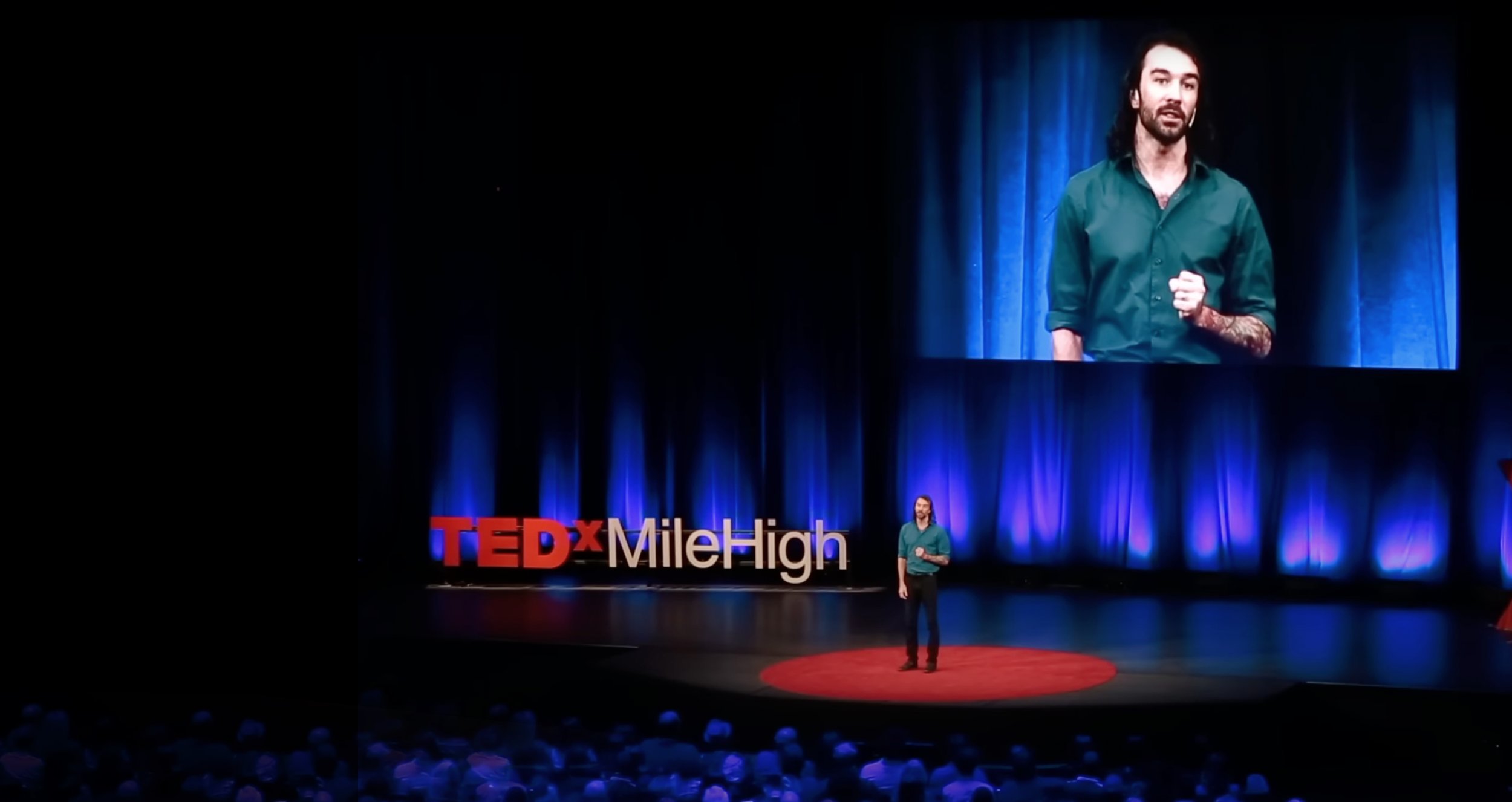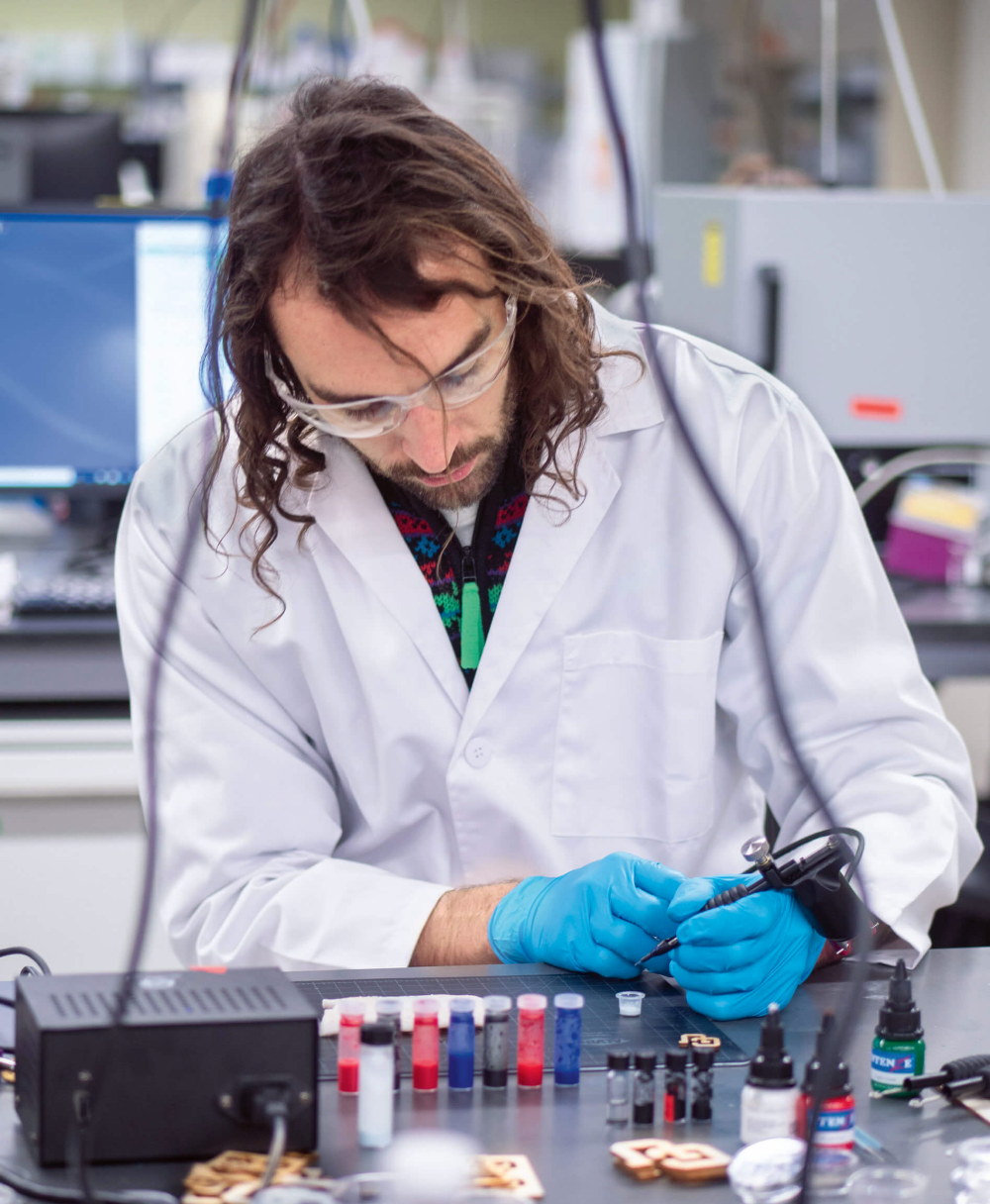Innovative Products.
Global Impact.
HYPRSKN / PressAssistant Professor Carson Bruns has received a prestigious National Science Foundation CAREER Award for research that investigates how the art of tattooing can incorporate the latest advances in nanotechnology to improve human health. Read More
Smart Tattoos Could Change Color, Indicate Health Issues
Imagine a tattoo that could alert you if you need to apply sunscreen or if your blood sugar is low. Sounds like joke, right? But it's not.
Along with a team of researchers at CU, Bruns developed a sort of "smart ink." It contains a color-changing dye that can appear or disappear, depending on what it is exposed to – such as potentially harmful UV rays. Read More
Bang Bang—who has inked the likes of Rihanna and LeBron—teamed up with research scientists to develop a new kind of light-sensitive ink. Read More
The 1/1 Magic Ink tattoo NFT sold for 100 ETH (about $150,000 at the time of this writing), making it the most expensive tattoo ever sold.
The holder of the Magic Ink NFT is entitled to receive the first Magic Ink tattoo by Bang himself, and is credited as the first tattoo enthusiast in the world to own a rewritable tattoo.
This ‘skin-tech’ tattooing originally came from scientists in the Department of Mechanical Engineering at the University of Colorado who were working to help solve the issue that we as humans are unable to detect the presence of UV light, and incorporating ink with biomedical benefits to alert wearers of dangerous UV. “As an artist I realized an interesting thought: Let’s take this further and create a variable in tattooing that’s never existed before,” Bang shared with Blockster. Read More
Tattoo artist Keith "Bang Bang" McCurdy uses the power of Twitter to answer some common questions about tattoos and tattooing.
What's the best way to practice tattooing? What techniques can a tattoo artist use to do proper shading? Do tattoo artists ever refuse to do certain tattoos? Watch Now
Inked Talks With The Creator Of The New “Smart Tattoo” That Can Indicate When You Need To Reapply Sunscreen
“I call them solar freckles because they’re like invisible freckles that are powered by sunshine,” Carson Bruns said. Read More
In the sci-fi novel “The Diamond Age” by Neal Stephenson, body art has evolved into “constantly shifting mediatronic tattoos” – in-skin displays powered by nanotech robopigments. In the 25 years since the novel was published, nanotechnology has had time to catch up, and the sci-fi vision of dynamic tattoos is starting to become a reality.
The first examples of color-changing nanotech tattoos have been developed over the past few years, and they’re not just for body art. They have a biomedical purpose. Imagine a tattoo that alerts you to a health problem signaled by a change in your biochemistry, or to radiation exposure that could be dangerous to your health.
You can’t walk into a doctor’s office and get a dynamic tattoo yet, but they are on the way. Early proof-of-concept studies provide convincing evidence that tattoos can be engineered, not only to change color, but to sense and convey biomedical information, including the onset of cancer. Read More
Carson Bruns, a biomedical engineering professor at the University of Boulder, Colorado in the United States, has been using nanotechnology to develop tattoo inks with biomedical properties. He explained that there are alternatives to the restricted blue and green pigments.
"At our lab, we're using nanotechnology to develop blue pigments that do not contain the banned chemicals and change color when exposed to heat and ultraviolet light," he told DW.
"So if you went outside and it was a really sunny day and you weren't wearing sunscreen, little blue dots will appear and kind of act like a warning that you should probably put on some form of sun protection to protect your skin. So that's the kind of biomedical aspect of our alternative which we are yet to commercialize in the US and worldwide," he added.
Read More
Recent Articles
































